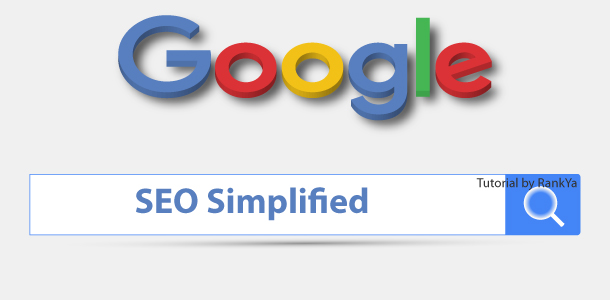Knowing how Google sees your web site can help you to better optimize your web pages for higher Google ranking results. So what happens each time Google visits your website?
Googlebot: is the name given to Google’s web crawling user agent (also known as web spiders that access your website)
Google Crawl Process Simplified
- Googlebot sends an HTTP request to fetch a URL (by the laws governing the copyright matters) Googlebot must first request robots.txt file) to see what it can crawl and what it is not allowed to crawl.
- Once it knows what it is allowed to crawl, then it sends another HTTP request. This time it will fetch the URL and send the contents to its storeserver. Each time there is a new URL found, Google will associate that URL with a new associated ID number called a docID
- Each crawl process is timestamped for more efficient crawling process and also to save on resources due to vastness of internet
- Google then will parse the web document contents and every word is converted into a wordID. Basically, at this stage your webpage has a document id, and every word has a word id with timestamp attached to the process of crawling (accessing) your website
Links are treated with due respect because without Hyperlinks, Google wouldn’t exists, neither would the World Wide Web “The Internet”.
How Does Google See Each Website
Press CTRL+U on your keyboard (using Chrome) (for Internet Explorer press right click “view source”) to see the HTML source code that makes up this web page. That’s what Google understands Hypertext Markup Language (HTML). That means: what we see in the design view of a web page doesn’t really mean much to search engines.
Although Google actually is extremely advanced and has algorithms for determining the quality of websites and encourages website owners to optimize it using advanced SEO techniques.
However, you can use Google Search Console Inspect URL tool or download a text based browser as this will be the next best thing as far as How Google Sees your site.
Google is advanced not because its searched the most, nor is it because of its dominance. Its because Google brings the most relevant information for search terms searched. Since it has the ability to analyze the quality of web sites from a viewpoint of a real person by using complex algorithms.
Google Sees All
Furthermore, today Google can also analyze JavaScript files, CSS (Cascading Style Sheet) and images to get the full picture on websites. These advanced abilities Google possesses also helps this search engine to combat spam as well.
For example: some rather not so intelligent webmasters use CSS to hide keyword stuffed text thinking that it will help his or her web site to rank higher in Google.
Another example: javascript can also be used to show different information to search engines compared to website visitors. All spam tactics such as hidden text and links are against Google’s Guidelines.
That is why Google algorithms always evolve to better identify spam and to provide quality and more relevant search results.
Video Lesson That Explains Important Parts of an HTML Document (part of Complete SEO Training Course)
Now that you’ve gained new knowledge about how search engines crawl and interpret web pages, now is a good time to learn how to rank in Google through latest how to blog posts by RankYa



Great high level insight into what’s going on behind the scenes. Very interesting.